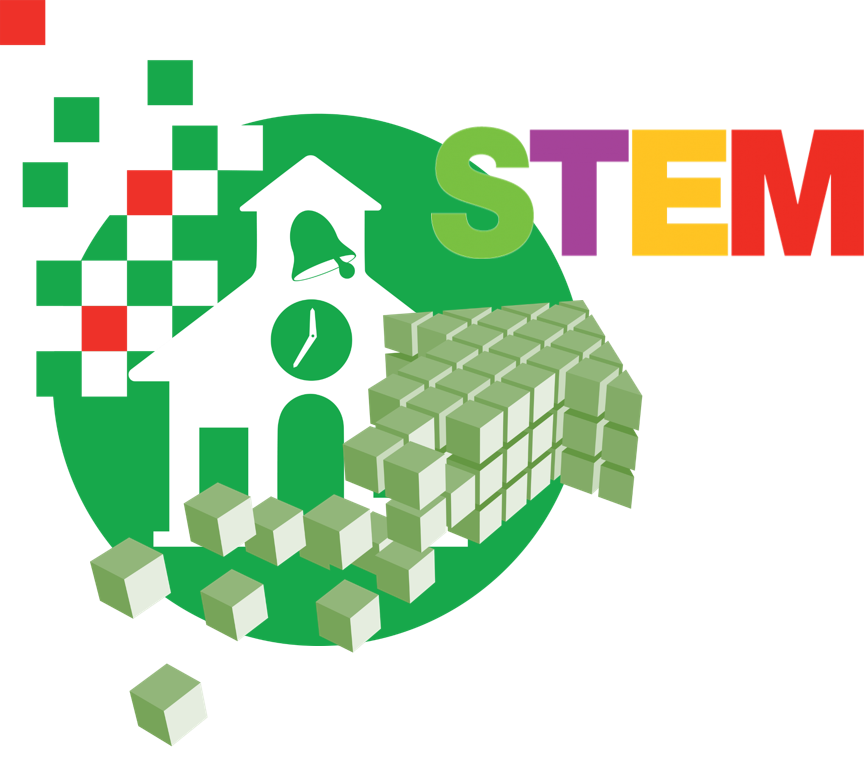Veracity, intellect, and logic are currently being assaulted in places where they should be championed. To ensure a better future for our children, we must strive to teach them how to think critically, remain curious, seek for the truth, and solve problems. Along the way, they need to learn to become lifelong learners. A good foundation in science, technology, engineering, and mathematics (STEM) can help students achieve all of these goals. Dr. Bryan Albrecht (@AlbrechtBryan), President of Gateway Technical College, explains, “STEM curriculum is a planned pedagogical sequence of learning objectives which connect science, math and engineering and design concepts through technological applications — learning by doing. This project-based approach has a proven track record of increasing career opportunities for youth and adult learners.”[1] For those reasons (and others), I, along with a few colleagues, founded The Project for STEM Competitiveness. Our goal is to help introduce new ways of getting students interested in STEM subjects by supporting extra-curricular activities that involve students in solving real-world problems using skills they learned in the classroom. Although many pundits decry efforts to stress STEM education, Albrecht points out, “Elementary school students receive on average 19 minutes per day of science instruction from kindergarten through third grade, and 24 minutes per day in fourth through sixth grades. To compound the issue, only 8 percent of America’s college students major in engineering, and 5 percent major in computer science and math.” Other countries face similar challenges.
STEM Skills and the Future
Brett Henebery (@Brett_Henebery), an Australian journalist, reports, “According to reports, 75% of jobs in the fastest growing industries will require Science, Technology, Economics and Maths skills, and by 2020, 90% of jobs will need people with digital skills.”[2] Joachim Horn (@joachorn), founder and chief executive at SAM Labs, adds, “For children, preparation for twenty-first century work means engagement with STEM-based learning from the earliest possible opportunity. To fill the STEM skills gap and navigate our digital future, children not only need to be excited about STEM-based subjects, but confident enough with them to consider appropriating them for a career. The role of teachers in drumming up passion and confidence in these subject areas couldn’t be more crucial.”[3]
Of course, educational systems are not just for teaching students job skills but also life skills. Which means, even though I stress STEM subjects, I fully appreciate the need for traditional liberal arts subjects as well. Even in those courses, however, skills learned in STEM settings can be applicable. That’s why Henebery stresses, “For schools, the challenges relating to this data are obvious: if they’re not providing — and more importantly, engaging — students with the skills inherent in these subject areas, they’re not preparing them for the workplaces they’ll be most likely to enter when they leave school.” As Horn noted, stimulating interest in STEM subjects should occur at the earliest possible opportunity. Kristen Fudale, an educator with nearly two decades of experience, believes schools can achieve early STEM-related goals using a two-stage process.[4] She explains:
Stage 1: Solving Problems Step-by-Step and Together. “To broaden technology integration within STEM curriculum, we began to introduce computer science through the international movement, the ‘Hour of Code.’ … Each year during the ‘Hour of Code’ I take the opportunity to introduce all grade levels to coding. In our K-4 buildings, our goal is to integrate technology into the curriculum and enhance the lesson, activity or the critical thinking skills of the student, not just to use technology. Game-based learning programs like CodeMonkey, which focus on coding for kids, are usually their first experience with coding that introduces the problem-based learning mindset.”
Stage 2: Applying a Problem-Based Mindset to Cross-Curricular Lessons. “Each day, we all need to take large amounts of information and figure out how to break them apart into doable tasks. We teach students these skills by weaving computer programming instruction into daily learning, rather than keeping the lesson isolated. Once students understand sequencing methods to reach a solution, we then pair up students to work together as they take turns as the lead in solving each problem. … Students love when we teach them a new skill that incorporates technology — especially those who may struggle in a traditional learning format.”
Since the Project for STEM Competitiveness incorporates a project-based approach, you won’t be surprised to learn I’m a big supporter of teaching students problem-solving techniques. In the long run, those techniques will better equip students to fill jobs that don’t currently exist. Ira Wolfe (@HireAuthority) reports that a study by the U.S. Department of Labor concludes, “65 percent of today’s schoolchildren will eventually be employed in jobs that have yet to be created.”[5] Faced with that reality, you can appreciate the enormity of the challenge educators have when trying to prepare our children to be successful no matter what the future brings. Horn laments, “There are STEM jobs everywhere, and not enough people to fill them. It’s a major problem. Solving it starts in the classroom.”
The Future of STEM
In another article, Horn suggests three things educators can do to encourage more students to engage with the subjects that will define our future.[6] They are:
- Ensure students are fluent in coding. “To prepare students for careers in growing STEM fields, we must increase the importance of programming literacy, or fluency in computer science and coding, in the same way that we did for reading and writing in the mid 20th Century. We need students to become as familiar with technology as they are with a pen and notepad. And it happens through hands-on experience.”
- Merge entertainment and education. “Today’s kids are ‘digital natives,’ having grown up around computers and other technologies. Given their familiarity with modern technology, it would be safe to assume offering young students the use of certain devices, applications or hardware within STEM lessons would be a ‘sure-fire’ way to keep them engaged and excited. However, teachers are finding that this familiarity is actually breeding a sense of apathy among their students. It’s ironically becoming increasingly difficult to present STEM lessons in a way that maintains student interest. To generate excitement around STEM lessons, it’s important to bake educational value into areas of technology that students are already engaging with on a daily basis, such as smartphones, tablets, video game consoles, and other devices. In the next five years, we will see a convergence of entertainment and education to occupy students’ interest.”
- Stress design to change STEM to STEAM. “Creating STEAM curriculum — science, technology, engineering, arts and math — is crucial to the success of student education in the next five years. When integrated into STEM, art and design give students the tools with which to think creatively and to solve complex problems. Countless studies have shown the value of art and design in a child’s education, particularly because of their ability to foster creative thinking — a skill necessary in everything from theater to organic chemistry. … In the next five years, we must work to incorporate a more creative approach to STEM education. This will be essential for molding the upcoming generation of students into the future engineers, scientists, mathematicians and creators that will shape our society through the next chapter of the technological revolution. … It all starts in the classroom.”
There has never been a more crucial time for our children to learn how to think clearly and critically. Matthew Randazzo (@MjRandazzo), Chief Executive Officer of the National Math and Science Initiative, asserts, “By beginning STEM learning in younger grades, we help children develop systems thinking and problem solving, which are exactly the skills needed for their future success.”[7]
Footnotes
[1] Bryan Albrecht, “What is STEM education?” The Journal Times, 26 July 2016.
[2] Brett Henebery, “Are your STEM programs having the impact they should?” The Educator, 26 October 2017.
[3] Joachim Horn, “Failure to act now on STEM subjects will cost us dearly later,” City A.M., 12 October 2017.
[4] Kristen Fudale, “The 2 stages of successful early STEM education,” eSchool News, 6 September 2017.
[5] Ira Wolfe, “65 Percent of Today’s Students Will Be Employed in Jobs That Don’t Exist Yet,” Success Performance Solutions, 26 August 2013.
[6] Joachim Horn, “Where will STEM education be in 5 years?” eSchool News, 24 October 2017.
[7] Matthew Randazzo, “STEM Seeds Planted Early,” Huffington Post The Blog, 17 August 2016.





